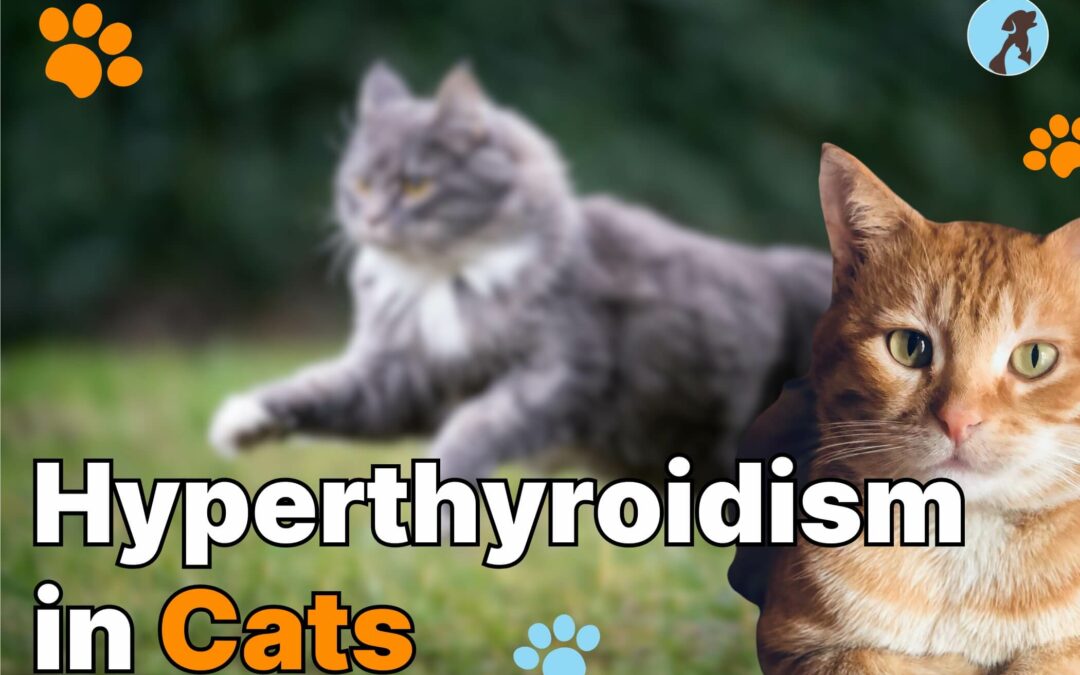Hyperthyroidism in cats is a common endocrine disorder, predominantly affecting middle-aged and older felines. Characterized by the overproduction of thyroid hormones, this condition can lead to a variety of symptoms, including significant weight loss, increased appetite, hyperactivity, and changes in fur quality.
Understanding hyperthyroidism is crucial for cat owners and veterinarians alike, as early detection and appropriate treatment can greatly enhance a cat’s quality of life. This article delves into the causes, symptoms, and diagnostic approaches for hyperthyroidism in cats, explores the various treatment options available, and offers insights into long-term management and the overall impact on a cat’s health and well-being.
Whether you are a pet owner looking to learn more about this condition or a veterinary professional seeking to update your knowledge, this comprehensive guide aims to provide valuable information on navigating hyperthyroidism in our feline companions.
Causes of Hyperthyroidism
Hyperthyroidism can be triggered by several potential factors. Environmental risk factors, including flame retardants and other organic pollutants, have been studied and may increase the likelihood of developing hyperthyroidism, although the exact mechanisms remain unclear. Additionally, exposure to high levels of dietary iodine may lead to hyperthyroidism in susceptible cats. While the precise cause of feline hyperthyroidism is not definitively known, possible contributing factors include imbalances of certain compounds in the diet and prolonged exposure to thyroid-disrupting chemicals found in food or the environment.
What are the signs of hyperthyroidism?
Cats with hyperthyroidism typically exhibit a range of symptoms that may initially be subtle but become more pronounced as the condition worsens. The most common clinical signs include weight loss, increased appetite, and increased thirst and urination. Other symptoms may include vomiting, diarrhea, and hyperactivity. Additionally, the coat of affected cats may appear unkempt, matted, or greasy.
Diagnosis
To diagnose a thyroid problem in a cat, a veterinarian will conduct a physical exam, palpate the neck for an enlarged thyroid gland, and check the cat’s heart rate and blood pressure. A blood chemistry panel and thyroid hormone level analysis, particularly T4, are typically ordered. While most cats with hyperthyroidism have elevated T4 levels, some may not, necessitating additional tests. Evaluating overall health, especially the heart and kidneys, through a blood chemistry panel and urinalysis is crucial for a comprehensive assessment.
Hyperthyroidism in Cats: Treatment Options
Hyperthyroidism is a prevalent condition in older cats, marked by an overactive thyroid gland that produces excess thyroid hormones. Effective management of this disorder is essential to ensure the well-being of affected felines. Here, we explore the various treatment options available, each with its own advantages and considerations.
1. Medications: Methimazole (Tapazole)
-
- Function: Blocks the production of thyroid hormones.
- Administration: Available in pill form, topical gel, or liquid.
- Pros: Non-invasive and can be adjusted or discontinued easily.
- Cons: Requires lifelong administration, potential side effects (e.g., gastrointestinal upset, liver toxicity), and regular blood monitoring.
2. Radioactive Iodine Therapy (I-131)
-
- Function: Involves a single injection of radioactive iodine, which selectively destroys overactive thyroid tissue.
- Pros: Highly effective with a high cure rate, minimal side effects, and typically requires no ongoing treatment.
- Cons: Requires hospitalization for a few days to a week to prevent radiation exposure to humans, higher initial cost.
3. Surgery (Thyroidectomy)
-
- Function: Surgical removal of the overactive thyroid gland(s).
- Pros: Potentially curative, especially effective for unilateral (one-sided) hyperthyroidism.
- Cons: Invasive with risks associated with anesthesia and surgery, possibility of damage to nearby structures (e.g., parathyroid glands), and requires skilled veterinary surgeons.
4. Dietary Management: Hill’s Prescription Diet y/d
-
- Function: Specially formulated food with restricted iodine content to reduce thyroid hormone production.
- Pros: Non-invasive, easy to administer through diet alone.
- Cons: Must be fed exclusively, limiting the cat’s diet, and may not be as effective in all cases. Compliance can be challenging in multi-cat households.
5. Combination Therapy
-
- Function: Utilizing a combination of treatments, such as medication initially followed by surgery or radioactive iodine.
- Pros: Allows for tailored treatment plans based on the cat’s health status and response to initial therapies.
- Cons: Can be more complex and expensive, requiring close monitoring and adjustments.
Considerations for Choosing a Treatment
When deciding on the best treatment option for a cat with hyperthyroidism, several factors need to be considered:
-
- Age and Overall Health: Older cats or those with other health conditions may benefit from less invasive treatments.
- Severity of Symptoms: More severe cases might necessitate more aggressive treatments like surgery or radioactive iodine.
- Owner’s Preference and Financial Situation: Cost and convenience play significant roles in decision-making.
- Cat’s Tolerance for Medication: Some cats may not tolerate oral medications well, influencing the choice towards other treatments.
Conclusion
Managing hyperthyroidism in cats requires a comprehensive approach tailored to the individual needs of the feline patient. By understanding the various treatment options available and their respective benefits and limitations, pet owners and veterinarians can collaboratively choose the most suitable course of action. Effective treatment not only alleviates the symptoms of hyperthyroidism but also significantly enhances the quality of life for affected cats.

